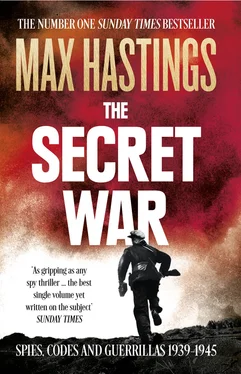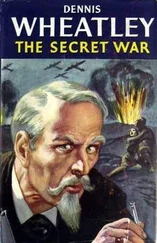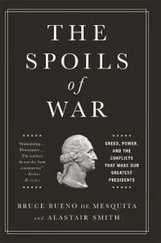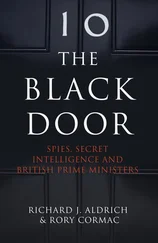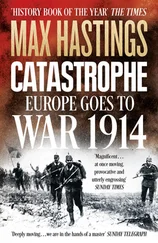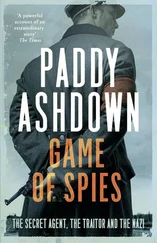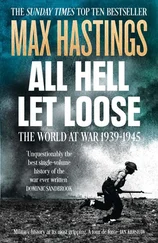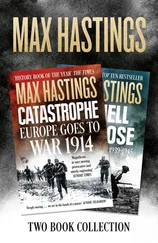With the assistance of a clue or ‘crib’ – a vital identifying link, usually a codebreaker’s guess about the nature of part of a given signal – a bombe could test millions of mathematical possibilities for the settings of three Enigma rotors. Figuratively, Agnes and her kin were bloodhounds needing a slipper or handkerchief to take up a scent. If there was no ‘crib’, the bombe could not solve the key – but mercifully often, there was one. Subsequent machines, miracles of reliability given their continuous operation, were given their own names by the Wrens who manned them around the clock, usually those of warships – Warspite , Victory and suchlike. The bombes did not take in enemy cipher messages and disgorge them in fluent German. They were instead priceless accelerators, once the codebreakers secured an insight into the nature of a given signal or traffic stream. Also useful was a battery of British Type-X cipher machines, modified to match the behaviour of Enigmas, on which Wren operators tested speculative message solutions. One of the principal constraints on codebreaking, especially between 1940 and 1942, was that access to the scarce technology had to be apportioned between competing claimants of the three services, and there was never enough ‘bombe time’ to go around.
Throughout 1940, human brainpower remained the dominant element in Bletchley’s successes, which increased with every passing week. It was ‘the Herivel tip’, not bombes, that enabled the team to crack the army-Luftwaffe ‘Red’ key in May. The overwhelming bulk of enemy traffic read through the rest of the year – around a thousand messages a day – was that of the Luftwaffe, and until the end of the war air force material was accessed more swiftly than that of the other services. An important requirement for success was what the codebreakers called ‘depth’ – possession of sufficient messages in a given key to give them playing space for calculations and speculations.
Luftwaffe signals provided many clues to the Wehrmacht’s parallel activities, but in the early days interpretation was impeded by lack of understanding of German terminology and abbreviations. In September 1940, Bletchley broke some traffic from Göring’s pathfinder unit, KGr100, which enabled it to forecast the targets of several bomber raids. But warning was of little practical usefulness to the defenders when hard power, in the form of radar-guided RAF night-fighters, was lacking in both numbers and effectiveness.
As more bombes were built – by 1945 there were 211 of them – they were dispersed around the London suburbs as a precaution against an enemy air attack on Bletchley. The operators, chiefly young women of the WRNS, found long hours beside the hot, smelly, clattering machines extraordinarily gruelling, especially when they were obliged to use tweezers to adjust the delicate electrical wiring. Some girls were unnerved by the monotonous racket. One of them said: ‘It was like a lot of knitting machines working – a kind of tickety-clickety noise.’ They went home with their shirt cuffs blackened by a fine spray of oil from the bombes’ revolving drums.
Naval Enigma remained for many months impenetrable. This was partly because its system of eight rotors, of which three were used at any one time, posed greater difficulties than the army’s five, and partly also because the Kriegsmarine’s operators were more disciplined than their Luftwaffe counterparts, and committed fewer errors to provide openings for Bletchley. There was a brief spasm of success in late April 1940, when five days’ traffic was read, but thereafter more than a year elapsed – an eternity in the minds of those who wrestled vainly with the problem day after day, week upon week – before the big breakthrough. Denniston said gloomily to Frank Birch, a 1918 veteran of Room 40 who now headed the naval section: ‘You know, the Germans don’t mean you to read their stuff, and I don’t suppose you ever will.’ Alan Turing himself had been dallying with the Kriegsmarine’s traffic almost since his arrival at Bletchley. A colleague, Hugh Alexander, observed that he became engaged because nobody else seemed to be making headway, and in his remote fashion he was fascinated by the abstract challenge.
It was Turing who devised a new method christened ‘Banburismus’, employing long punched paper sheets manufactured in the town of Banbury, which assisted the first important breaks into Kriegsmarine messages by reducing the number of possible Enigma rotor orders to be tested from 336 to around eighteen. This system was introduced in the spring of 1941, just as British losses to U-boats began to become alarming. On land, the British in those days lacked power and opportunity to do much with such knowledge of the Wehrmacht’s movements as they secured, and there was a large element of luck about what messages were broken. In North Africa in early 1941, the British Army profited from some good sigint derived from eavesdropping on the Italians, but few Enigma messages were broken quickly enough to assist decision-making on the battlefield. At sea, by contrast, there was an early golden prize for GC&CS’s labours.
The impetus towards success was provided by a series of captures far out on the ocean, which dramatically increased Bletchley’s knowledge of the enemy’s naval communications. On 23 February 1941, British commandos raiding the Lofoten Islands seized the German armed trawler Krebs , from which spare rotors for a naval Enigma were recovered, though the machine itself had been thrown overboard. This ‘pinch’ prompted the Royal Navy to launch an operation explicitly designed to capture more Enigma material, targeting German weather-reporting trawlers between Iceland and Jan Mayen Island. On 7 May, a sweep by three cruisers located and seized the München – but too late to save its Enigma and associated coding data from the Arctic deep. On 25 June the navy caught its sister vessel the Lauenburg , again minus its Enigma, but with a useful haul of cipher material.
Hut 8 now had enough information to read some U-boat signals, but the seizure which opened the traffic to fluent decryption was the fruit of chance and high courage, rather than of design. On 9 May 1941 a convoy escort group attacked and forced to the surface Julius Lempe’s U-110. A boarding party from HMS Bulldog commanded by Sub-Lieutenant David Balme secured the submarine, prevented its sinking, and brought back to his destroyer pearls beyond price: documentation for current Enigma. Though U-110 later sank under tow – fortunately so, from a security viewpoint – the short signal book, officer ciphering instructions and other material reached Bletchley safely, and the secret of the submarine’s capture was preserved beyond the war’s end. An Enigma machine was also recovered, but perversely this was the least useful element of the booty, because Bletchley had one already, together with assorted rotors seized in other ‘pinches’. Within days, Hut 8 was reading a steady stream of German naval messages. Ralph Erskine, one of the foremost experts on codebreaking at Bletchley, believes that the Park was already close to reading the Kriegsmarine traffic, even without the U-110 haul. What is for certain, however, is that it was impossible to break the U-boat ciphers without the assistance of captured material, which would again become a vital issue later in the war.
The breakthrough into the Kriegsmarine ciphers came just too late to influence the pursuit of the Bismarck in the latter days of May 1941. Conventional direction-finding on the behemoth’s wireless transmissions, supported by air reconnaissance, were the key factors in enabling the Royal Navy to intercept and sink it on the morning of the 27th, though assisted in the last stage by decryption of a Luftwaffe signal revealing Brest as Bismarck ’s destination. Thereafter, Bletchley produced a steady stream of messages that revealed U-boat positions and intended courses. The so-called Hydra cipher was laid bare, and other keys were progressively broken: the more the Park knew, the more it was able to discover. The flow of decrypts was never assured, however, and disturbing delays sometimes took place. ‘Huff-Duff’ – High-Frequency Direction-Finding – played an important secondary role in the location of U-boats. The outcome was a relentless shift in the balance of advantage in the Battle of the Atlantic through 1941 and into 1942. Here was a case where intelligence indisputably and importantly influenced events.
Читать дальше
